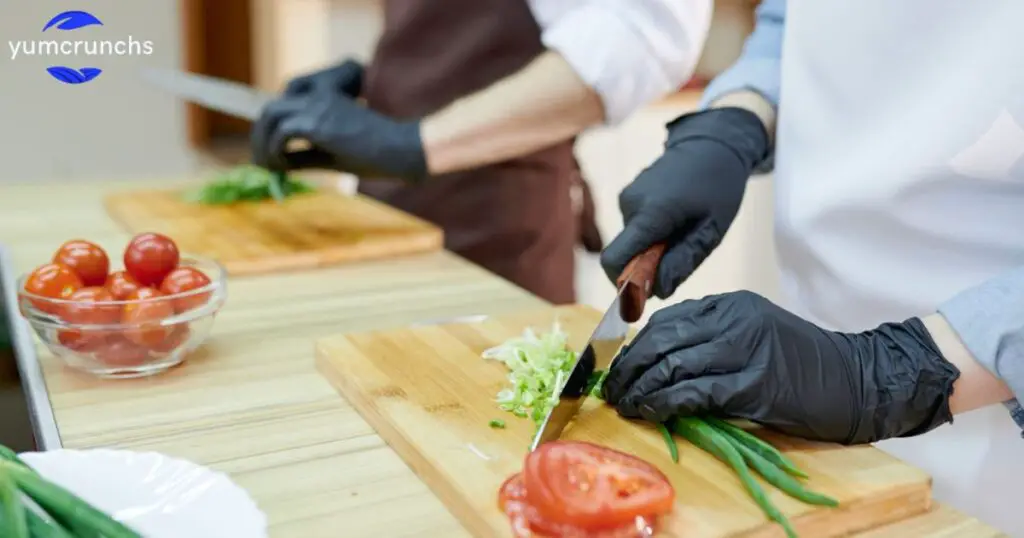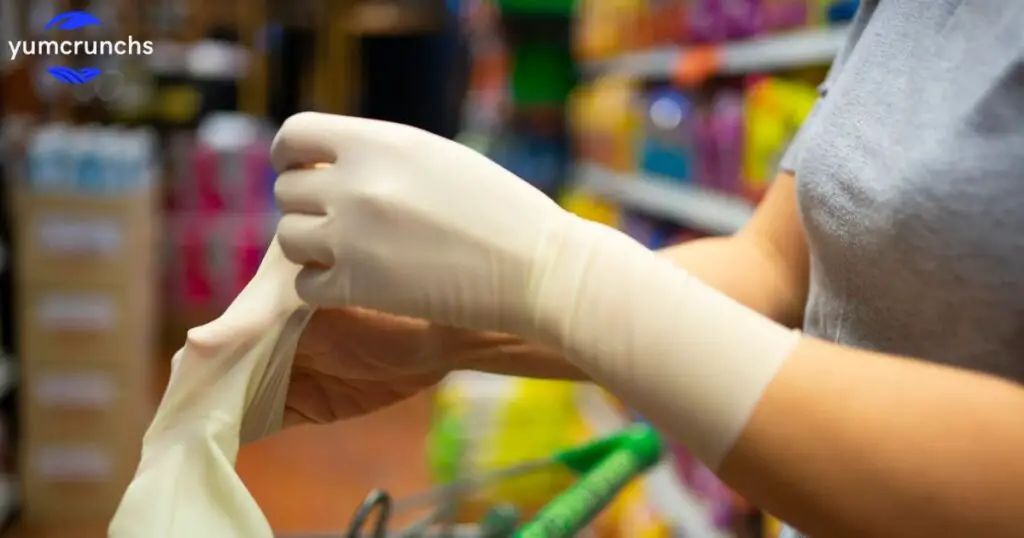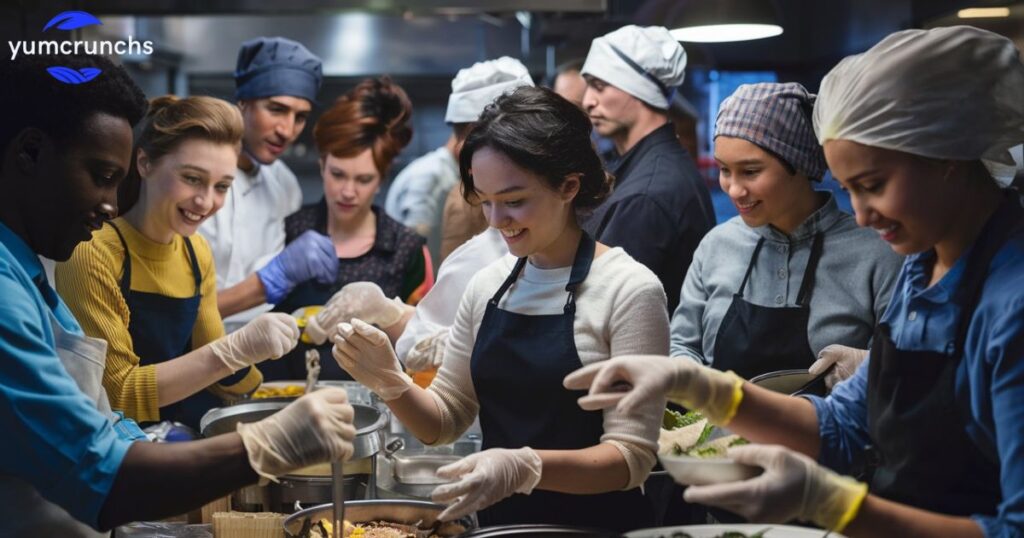In the food industry, the use of gloves by workers plays a crucial role in maintaining hygiene standards and ensuring food safety. Gloves act as a barrier between the food and any potential contaminants present in the hands of the workers. Knowing when food workers are required to wear gloves is essential for upholding health regulations and preventing the spread of illnesses.
When handling food, especially ready-to-eat items like sandwiches or salads, food workers are often required to wear gloves. This precautionary measure minimizes the risk of transmitting harmful bacteria or viruses from the hands to the food, safeguarding the health of consumers. By adhering to these guidelines, food establishments demonstrate their commitment to providing safe and hygienic products to their customers.
However, there are exceptions to the glove-wearing requirement, such as when workers are involved in tasks that do not directly involve food handling, like handling money or cleaning. In such cases, thorough handwashing before and after these activities is necessary to maintain cleanliness. Understanding these regulations not only ensures compliance but also promotes a culture of food safety in the workplace, benefiting both employees and customers alike.
Do You Need To Wear Gloves In Food Service?
In food service, wearing gloves is often necessary to maintain hygiene standards. Gloves act as a protective barrier between food and potential contaminants. They are especially crucial when handling ready-to-eat items to prevent the spread of harmful bacteria. Additionally, wearing Handwear helps uphold health regulations and ensures the safety of consumers. However, there are exceptions to this rule, such as tasks that do not involve direct food contact. In these cases, thorough handwashing before and after activities is essential. Understanding when to wear Handwear promotes a culture of food safety in the workplace.
While gloves are essential in food service, there are exceptions to consider. Tasks like handling money or cleaning may not require gloves. Instead, thorough handwashing becomes critical before and after such activities. By following these guidelines, food establishments demonstrate their commitment to providing safe and hygienic products. Ultimately, whether Handwear are needed depends on the specific task and its potential impact on food safety. For a comprehensive understanding of glove selection tailored to your specific needs, consult our Glove Selection Guide.
What Are The Laws Around Gloves In Food Service?

- Gloves are required when handling ready-to-eat foods to prevent contamination.
- Laws mandate proper glove usage to maintain hygiene standards.
- Employees must change Handwear when switching between tasks to avoid cross-contamination.
- Gloves should be worn during food preparation, handling, and serving.
- Exceptions exist for tasks that do not involve direct food contact.
- Proper handwashing is crucial even when Handwear are worn.
- Compliance with glove laws ensures food safety in establishments.
When Should Food Workers Wear Gloves?
Food workers should wear handwear during specific tasks to maintain hygiene. When handling ready-to-eat foods, gloves are necessary to prevent contamination. This includes tasks like preparing sandwiches, and salads or slicing fruits and vegetables. Additionally, when touching any food that won’t be cooked further, handwear should be worn to ensure safety. Changing gloves between tasks helps prevent cross-contamination and maintains cleanliness. However, tasks like handling money or cleaning might not require handwear. In such cases, thorough handwashing is crucial before and after completing these activities. What is The Best Way to Prevent Poor Food Safety?
Moreover, during food preparation, handling, or serving, Gloves should be worn. This includes activities like assembling food orders or serving dishes to customers. Proper Handwear usage is mandated by health regulations to uphold safety standards. Understanding when to wear Handwear promotes a culture of food safety in the workplace. By adhering to these guidelines, food workers demonstrate their commitment to providing safe and hygienic products to customers.
Are Gloves Recommended For Ready-To-Eat Foods?
Handwear are highly recommended when handling ready-to-eat foods for safety. Ready-to-eat foods are those that will not undergo further cooking. These include items like salads, sandwiches, and fruits. Wearing gloves prevents the transfer of harmful bacteria from the hands to food. This helps maintain hygiene and prevents foodborne illnesses. Additionally, Gloves provide a protective barrier, ensuring the cleanliness of the food. By wearing Handwear, food handlers demonstrate their commitment to food safety.
Furthermore, health regulations often mandate glove usage when handling ready-to-eat foods. Gloves help maintain compliance with safety standards. They minimize the risk of contamination and uphold hygiene protocols. Therefore, food establishments need to prioritize glove usage for handling ready-to-eat foods.
What Is Ready-To-Eat Food?
Ready-to-eat food is any food that can be consumed immediately. These foods require no additional cooking or preparation before eating. Examples include pre-packaged salads, sandwiches, fruits, and snacks. Ready-to-eat foods are convenient and often require minimal handling. They are commonly found in grocery stores, convenience stores, and restaurants.
These foods are typically fully cooked or processed and are safe to eat without further treatment. Ready-to-eat foods are designed for quick consumption, making them suitable for busy lifestyles. They provide a convenient option for meals or snacks on the go.
Are Gloves Required For Chefs?

Gloves are not always required for chefs during food preparation. Chefs often rely on proper handwashing techniques instead of Gloves. However, in some cases, Gloves may be necessary, especially when handling ready-to-eat foods. This includes situations where direct contact with food is unavoidable. Additionally, chefs should wear Gloves when dealing with open wounds or sores to prevent contamination. Nonetheless, the decision to wear Handwears ultimately depends on specific health and safety regulations enforced by local authorities.
In professional kitchens, chefs prioritize cleanliness and hygiene to ensure food safety. While Gloves can provide an extra layer of protection, they are not always mandatory. Instead, chefs focus on maintaining clean hands and work surfaces. Regular handwashing is essential before and after handling food items, regardless of glove usage. Overall, while Handwear may be required in certain situations, chefs primarily rely on rigorous sanitation practices to uphold food safety standards.
Are Gloves Required For Servers?
Handwear are not always required for servers in food service establishments. Servers often handle plates, utensils, and glasses rather than directly touching food items. However, in certain situations, such as when serving ready-to-eat foods like salads or bread, Handwear may be necessary. The decision to wear gloves depends on specific health and safety regulations and the establishment’s policies. Some restaurants may mandate glove usage for servers to maintain hygiene standards and prevent cross-contamination.
In establishments where Handwear are required for servers, it is essential to change them frequently to prevent contamination. Servers should also practice proper handwashing techniques before and after handling food or wearing Gloves While gloves can provide an additional layer of protection, they are just one aspect of ensuring food safety. Servers should prioritize cleanliness and hygiene in all aspects of their duties to uphold the highest standards of sanitation.
Why Should You Wear Gloves?
- Handwears protect against harmful bacteria and viruses on hands.
- They prevent cross-contamination between surfaces and food.
- Wearing Gloves upholds hygiene standards in food handling.
- Gloves are especially important when handling ready-to-eat foods.
- They reduce the risk of foodborne illnesses and contamination.
- Proper glove usage demonstrates a commitment to food safety regulations.
How Else Do I Ensure Safety?
Ensuring safety goes beyond just wearing Gloves in food handling. It involves maintaining a clean and sanitized environment throughout food preparation. This includes regularly washing hands with soap and warm water for at least 20 seconds. Additionally, surfaces and equipment should be cleaned and sanitized regularly to prevent the spread of bacteria and viruses. Proper storage of food items at appropriate temperatures also plays a crucial role in food safety.
Furthermore, staying informed about food safety guidelines and regulations is essential. This ensures compliance with health standards and promotes a culture of safety in food service establishments. Regular training and education for staff members on proper food handling techniques contribute to maintaining a safe environment. Ultimately, a combination of proper hygiene practices, adherence to regulations, and ongoing education is key to ensuring safety in food service.
What Can Happen If Gloves Aren’t Worn?

- Risk of transmitting harmful bacteria and viruses to food.
- Increased likelihood of cross-contamination between surfaces and food.
- Potential for spreading foodborne illnesses to consumers.
- Non-compliance with health regulations and safety standards.
- Higher risk of contamination from touching unclean surfaces.
- Reduced confidence in food safety practices among customers.
What About Hand Washing?
- Hand washing removes dirt, bacteria, and viruses from hands.
- It reduces the risk of spreading illness to oneself and others.
- Proper hand washing involves using soap and warm water.
- Rubbing hands together for at least 20 seconds ensures effectiveness.
- Hand washing should be done before and after handling food.
- It’s important after using the restroom or touching contaminated surfaces.
Is Bare-Hand Contact Ever Okay?
Bare-hand contact may be acceptable in certain food-handling situations. In some cases, wearing gloves can actually increase the risk of contamination. For instance, when handling ready-to-eat foods that won’t undergo further cooking, bare-hand contact may be preferred. However, even in such instances, strict hand hygiene practices must be followed.
It is crucial to ensure hands are thoroughly washed before handling food without gloves. Additionally, food workers should not have any cuts, sores, or infections on their hands. While bare-hand contact may be acceptable in specific situations, it is essential to assess the risks and adhere to proper hygiene protocols to maintain food safety standards.
When Should I Change Gloves?
- If Handwear is torn or punctured, replace it immediately.
- Change Handwear after handling chemicals to prevent contamination.
- Replace Handwear if it becomes visibly soiled or dirty.
- Always change Handwear when moving between handling raw meats and ready-to-eat foods.
- If Handwear becomes damp or sweaty, change it for hygiene.
- Change Handwear if you’ve been wearing them for an extended period to maintain cleanliness.
- Whenever switching tasks, especially from handling hazardous substances to food preparation, change gloves.
- When Handwear loses its elasticity or grip, it’s time to replace them.
- Change Handwear if they develop holes or tears to avoid cross-contamination.
- If Handwear is used in medical settings, adhere to recommended change intervals to prevent infection spread.
How Long Can I Wear Gloves?

The duration you can wear Handwear depends on various factors. Generally, Handwear should be changed between tasks to prevent cross-contamination. If Handwear become visibly soiled or torn, they should be replaced immediately. Moreover, wearing gloves for an extended period can lead to sweating and discomfort, making it necessary to change them regularly.
Additionally, Handwear should be changed if you switch between handling different types of food. For example, if you handle raw meat and then move to handling ready-to-eat foods, Handwear must be changed to avoid contamination. It’s crucial to prioritize food safety and hygiene by adhering to proper glove usage guidelines.
Frequently Asked Questions
How often should gloves be changed when handling food?
Gloves should be changed between tasks and when they become soiled or torn to prevent contamination.
Why is proper handwashing essential in food handling?
Proper handwashing removes bacteria and viruses, reducing the risk of foodborne illnesses.
When is bare-hand contact acceptable in food service?
Bare-hand contact may be acceptable when handling foods that will not be further cooked.
Conclusion
In conclusion, understanding the regulations surrounding when food workers are required to wear gloves is crucial for maintaining food safety standards. By adhering to these guidelines, establishments can ensure the health and well-being of their customers while also upholding industry standards. However, the nuances of these requirements may vary from state to state, prompting the need for ongoing education and awareness within the food service industry.
As we have explored the necessity of glove usage in food handling, it raises the question of how these regulations contribute to overall food safety practices. Considering the potential risks associated with bare-hand contact, one might wonder about the effectiveness of glove usage in preventing contamination. Thus, it underscores the importance of continuous evaluation and improvement in food safety protocols to address such inquiries and maintain public trust in the food service industry.

Daniel, a seasoned author with 8 years of expertise in SEO, brings a delectable blend of culinary flair and digital finesse to the food niche on his website.



